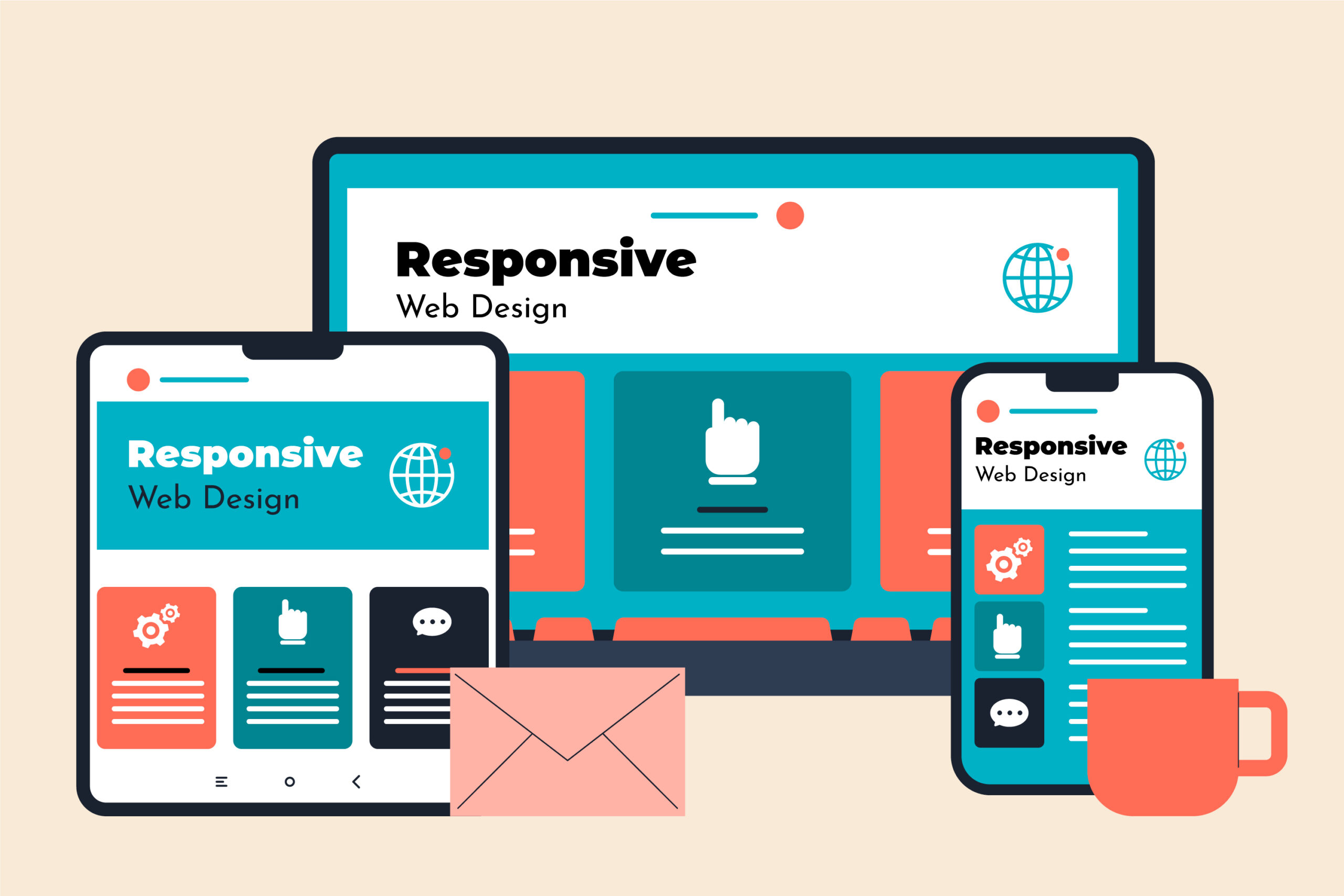- April 20, 2024
- by Mariyam Arshad
- Website development
- 0 Comments
One thing never changes in the continually changing world of web development: the significance of building responsive websites. As more people access the internet via a variety of devices—including desktop computers, tablets, and smartphones—developers are placing a high premium on making sure consumers have a seamless experience across all platforms. We’ll go into the topic of responsive web design in this blog article and examine how developers may use this strategy to give their audience an amazing user experience.
Understanding Responsive Web Design:
Building websites with responsive web design enables them to adjust and react to the user’s device and screen size. Responsive design guarantees that a single website may fluidly adapt its layout, content, and functionality to deliver the best possible viewing experience across all platforms, eliminating the need to create distinct versions of a website for different devices.
Why Responsive Design Matters:
1- Enhanced User Experience:
Regardless of the device a user is using, having a responsive website guarantees that they can explore and interact with it with ease. Increased customer satisfaction, decreased bounce rates, and more engagement result from this.
2- Improved Accessibility:
Responsive websites are more inclusive and can accommodate users with disabilities or varied browsing preferences because they are designed with accessibility in mind.
3- Better SEO Performance:
Websites that are optimized for mobile devices are ranked higher by search engines. By using responsive design, you may increase organic search traffic to your website and expand its audience.
4- Cost-Efficiency:
It is less expensive to maintain a single responsive website than several versions for various devices. It guarantees consistency across all platforms and cuts down on maintenance and development time.
5- Future-Proofing:
By adjusting to new screen sizes and devices, responsive design ensures that your website is future-proof and compatible with developing technologies.
Key Principles of Responsive Web Design:
1- Fluid Grid Layouts:
Make use of adaptable grid systems that change in proportion to the user’s screen size to enable content to move between devices without interruption.
2- Media Queries:
Use CSS media queries to apply particular styles according on the screen width, resolution, and orientation of the device.
3- Flexible Images and Media:
Make multimedia and visual material as scalable and clear as possible on a variety of devices.
4- Touch-Friendly Design:
Make sure interactive items are simple to tap and navigate on touchscreen devices by designing them with touch motions in mind.
5- Performance Optimization:
Reduce the time it takes for pages to load by making code optimizations, asset compressions, and content prioritizations that are critical for quick rendering—especially on mobile devices with constrained bandwidth.
Implementing Responsive Design in Practice:
1- Mobile-First Approach:
Design first for small screens and work your way up to larger ones. By doing this, you can be confident that the main features and content of your website are adapted for smaller screens.
2- Testing Across Devices:
Test your website frequently on a range of hardware and browser combinations to find any compatibility problems or inconsistent design.
3- Iterative Improvement:
Get input from users and stakeholders on a regular basis, then make iterative changes to your design to fix any usability problems or shortcomings.
Conclusion:
In conclusion, building flexible websites is essential in the current digital era—it’s not just a trend. Developers must give responsive web design top priority as users depend more and more on a range of devices to access the internet in order to guarantee a smooth and uniform user experience across all platforms. Developers may create websites that fluidly adjust to a variety of screen sizes and devices by embracing responsive design principles like media queries, touch-friendly navigation, and fluid grid layouts. This benefits organizations in terms of cost-effectiveness, accessibility, and SEO performance in addition to increasing user happiness and engagement. Responsive design is still an essential component of web development as technology develops further, allowing websites to remain current and available to consumers on all devices in the present and the future.





